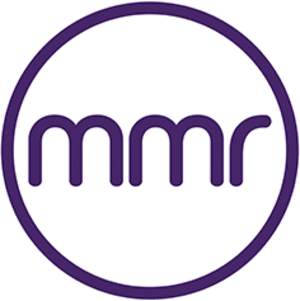Full and equally accessible research
Accessibility in research should be viewed as the design of research products, devices, platforms, services and environments to meet the needs of people with disabilities. It ties in with data protection obligations that emphasise transparency and tailoring of privacy information for different audiences.
It is underpinned by the Equality Act of 2010, which entrenches accessibility to specified services and places a duty on organisations to make reasonable adjustments for disabled users’ needs.
Although a binding legal obligation under the Equality Act will seldom be applicable to commercial market researchers, there will always be the ethical duty to ensure research projects reflect the wide diversity of our world and respect the rights and wellbeing of all individuals. Everyone in research must make efforts to ensure research participants with disabilities can take part and access the same projects, in similar time and with similar effort, as those participants who are not disabled. So what should inform an accessibility strategy in research?
Researchers need to reflect on what accessible means for their approach to different types of research projects.
Proportionality
The Equality Act is a useful guide for considering where changes may be made, that the requirement is proportionate, and that organisations consider the:
- Nature of the disability
- Practicability of changes
- Use of the changes and whether they would overcome the disadvantages disabled people experience
- Size of the organisation
- Amount of money and resources available
- Cost of making changes.
Proportionality of tailoring means that, while researchers may need to make greater adaptations where disabled people are the focus of the research project, adaptations must always be considered and incorporated (as appropriate) as part of all general research design.
Research method
Lack of accessibility adaptations can impact on participation throughout the research cycle – from recruitment through to obtaining consent for taking part, interviewing and reporting of findings. Researchers must ensure that different adjustments are embedded for different interactions, as appropriate. For example:
- Face to face – how does this work for participants with reduced mobility? Think about physical adjustments and features such as steps and stairs in research centres. Are all areas accessible and is extra staff assistance available? How about blind and partially sighted participants? Can visual aids and showcards be avoided?
- Telephone – are measures in place for participants with hearing difficulties? Think about using telephone amplifiers to make incoming speech louder, or use of textphones or videophones.
- Postal – can participants with reduced or low vision participate? Is it short enough to allow those with reduced dexterity to complete the questionnaire?
- Online – can participants with reduced or low vision participate? Think about ensuring layouts are readable. Is HTML being used appropriately on a website?
Disability inclusion
Several factors need to be tackled to ensure inclusion, such as the research environment, including: inaccessible buildings or transport services; other people’s attitudes because of stereotyping, discrimination and prejudice; and the approach of the research organisations in ensuring that information is accessible, and policies and procedures are flexible enough to accommodate changes.
There is potential for a wide range of accessibility modifications for people with:
- Hearing impairments – use subtitles or transcripts for videos; check whether portable hearing loops are available; consider a sign-language interpreter
- Low vision – use good contrasts and readable font sizes in documents; employ a linear, logical layout; and ensure that text flows and is visible when subject to high magnification
- Speech impediments – use unaided communication methods, such as body language, sign language, and verbal and gestural strategies
- Physical or motor disabilities – use large, clickable actions for online research; design projects for keyboard or speech-only use; ensure that the physical environment is suitable
- Reading impairments – use images and diagrams to support text; keep content in documents short and clear.
Importantly, people with disabilities can advise on the effectiveness of different methods for doing research with people with impairments. Consultation will help to ensure that the approach to the research is as inclusive as possible.
Accessibility is key to better research
Researchers need to play their part in empowering individuals by reducing any barriers to research participation. Understanding the perspective, needs and priorities of people with different impairments will help you to deliver better quality research and meet your research objectives.
MRS will publish guidance in early 2019 to support members in embedding accessibility in research projects. As a starting point, develop an ethical approach that commits to diverse and inclusive research approaches that are accessible to all – and ensure that you are:
- Prepared – but proportionate in making adjustments
- Flexible – but open about what can and cannot be done
- Empathetic and empowering, to maximise individuals’ participation in the research.

We hope you enjoyed this article.
Research Live is published by MRS.
The Market Research Society (MRS) exists to promote and protect the research sector, showcasing how research delivers impact for businesses and government.
Members of MRS enjoy many benefits including tailoured policy guidance, discounts on training and conferences, and access to member-only content.
For example, there's an archive of winning case studies from over a decade of MRS Awards.
Find out more about the benefits of joining MRS here.












0 Comments